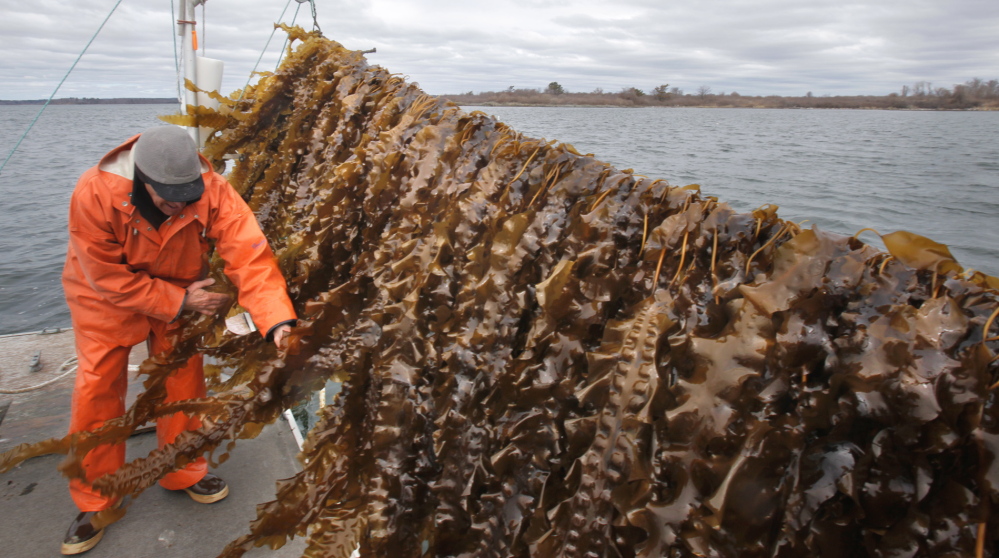A Casco Bay company that bills itself as the country’s first open-water commercial kelp farm got state approval Friday to convert a temporary seaweed plot off Chebeague Island into a 10-year lease, giving it the financial and regulatory certainty it needs to support the expansion of its Saco processing operation.
Ocean Approved first began cultivating kelp at the Chebeague site about four years ago, said President Paul Dobbins. In its best season, it produced about 87,000 pounds of sugar, horsetail and winged kelp. The company also holds another standard lease – which lasts for 10 years, as compared to an experimental lease’s three years, and can be renewed – in the waters off Chebeague.
“This won’t change what we’re doing on the site, but gives us the certainty we need to invest in the company because we know we will be able to continue to grow kelp there with no interruption,” said Dobbins. “We have been growing pretty fast. We are just finishing up an expansion of our processing facility in Saco. We need product to support the processing operation.”
Ocean Approved started growing kelp in 2009, Dobbins said. It has used temporary leases to explore two other sites, one off Blue Hill and another close to Jewell Island, that it eventually rejected for possible long-term cultivation because the water was too rough for the spring harvest or the kelp itself did not thrive there. Off Chebeague, Dobbins said, the kelp can grow up to 5.5 inches a day on a good early spring day.
Ocean Approved does not yet have a retail shop, but instead sells its seaweeds to institutions, like smoothie shops from Texas to New York. During harvest time, the company employs 42 part-time seasonal workers to reap and then process the seaweed, in addition to the four full-timers and one part-timer on the books throughout the year, Dobbins said.
Dobbins said Ocean Approved isn’t actively looking for more cultivation sites, but is instead helping others to expand kelp production to help fill supply needs and bolster the state’s burgeoning aquaculture industry. The company has gone so far as to put a kelp growing manual on its website to encourage more seaweed farms. Its investors include Coastal Enterprises Inc., Island Institute and Maine Venture Fund.
Earlier this year, aquaculture was chosen as one of three industries that should be targeted for development by FocusMaine, a new group of leading business, academic and political figures formed to tackle the problem of economic stagnation in Maine. This week, Gulf of Maine Research Institute issued a report on the Maine aquaculture industry’s potential for quadruple growth in value through 2030, although that focused on shellfish.
Maine landed 15 million pounds of seaweed valued at about $530,000 in 2015, according to state figures. That is about three times as much seaweed as it had landed a decade earlier, which was about when Maine overtook California to became the nation’s top seaweed producer. Farmed kelp represents just a fraction of the market, however, even here in Maine, where numbers are still so small that the state doesn’t even release them.
As of March 2014, the most recent data that Maine Department of Marine Resources published, Maine had just three leases for about 7 acres of seaweed crops.
A typical seaweed growing season begins in November, when farmers begin seeding a plot. The seaweed grows for 90 to 110 days, with peak growth in March and April before a May harvest. Kelp grows best on a protected, muddy bottom about 30 feet deep with a light current.
Penelope Overton can be contacted at 791-6463 or at
poverton@pressherald.com
Twitter: PLOvertonPPH
This story was changed from its original version to correct the spelling of the Ocean Approved name and the description of its operation.
Send questions/comments to the editors.



Comments are no longer available on this story